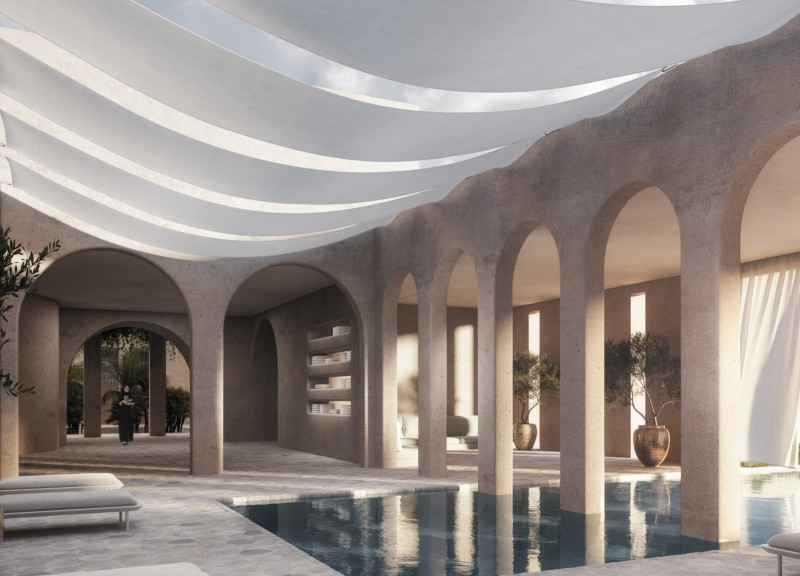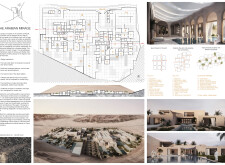5 key facts about this project
### Project Overview
Located on the outskirts of Riyadh, Saudi Arabia, this architectural development aims to meet the integrated living needs of families while drawing on the rich traditions of Arab architecture. The project seeks to provide a contemporary living environment that emphasizes sustainability, privacy, and community, effectively blending modern design with cultural heritage.
### Spatial Organization and Community Focus
The design employs clustered courtyards and interconnected villa clusters, mirroring the traditional urban fabric of the region. This approach fosters community interaction while ensuring private spaces for residents. Each villa is strategically positioned around shared areas that encourage social engagement, presenting a harmonious balance between communal and individual living experiences.
### Material Selection and Sustainability
The project makes thoughtful use of materials that are both locally sourced and sustainable. Local stone is utilized for structural support and aesthetic continuity within the desert landscape, while palm wood serves various interior finishes to enhance warmth and connection to place. Natural fabrics create a comfortable indoor environment, and glass is employed to maximize natural light and blur the boundaries between indoor and outdoor spaces. The choice of materials reflects a commitment to local craftsmanship and environmentally friendly practices, aligning with the overarching goal of sustainability in the design.
Key features include the strategic orientation of structures to mitigate environmental impact and the incorporation of traditional architectural elements, such as stylized arches, that resonate culturally and enhance the sense of identity within the space.



















































